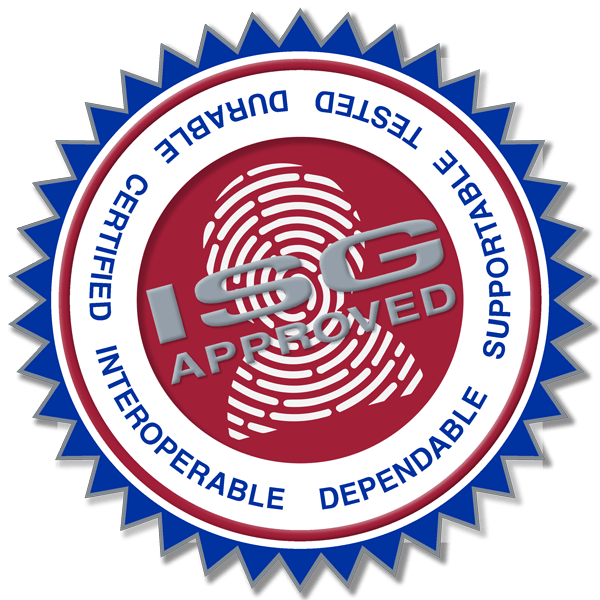Why is having the right photo ID system so vital to your entire security plan? The issuance of photo ID cards is an important part of an overall security plan. An ID card is the visual verification that the person is authorized to be there, whether inside a facility, participating in an event, or accessing an organization’s assets. An ID card is often also used for other card-based applications and services such as door access control, parking, cafeteria, print/copy control, and logical access control.
While there is an abundance of photo ID system solutions available for purchase on the internet, we firmly believe that photo ID systems are NOT a commodity, but rather a solution. Careful consideration of many factors should be taken so you select the RIGHT system for your organization. Yes, cost is important, but so is having the appropriate solution that meets your real-world needs.
To Whom to Issue ID Cards?
To have a solid visual security program, ALL groups of people in your facility should have and wear their ID card. This includes employees, contractors, and visitors. Or, in schools, it includes faculty, staff, students, volunteers, and visitors. Visitor identification is usually a separate system from the ID card system, and the most secure kind of visitor ID is a temporary pass issued for each individual visitor.
In addition to deciding who should be issued ID cards, you also need to consider how often to re-issue new cards, either in bulk, individually, or on a scheduled basis. Knowing how often you need to issue and re-issue cards could be a large factor in what types of software and hardware you need to purchase. Many ID dealers also provide rental options for times of the year when you know you may need additional equipment to handle high issuance volumes.
Another factor that may affect how often you re-issue cards can include upgrades to new security features (like adding laminate or encrypting access rights), new protocols or technology (like time & attendance needs or contactless readers), or the desire to implement a new ID design (such as a new company logo or color schemes). Thorough, advance planning with all organization decision makers, can help you make sure that you are making the correct ID system purchase for both your present and future card issuance needs.
ID Card Design Considerations
What do you want to print on your ID cards? This relates to the question of whether you need a single-sided or dual-sided card printer. It is our experience that most organizations use the “real estate” of both sides of the card to fit what they need. Common back-side printing may include a barcode, a mission statement, an “if lost/return to” message, and/or EMT information. Often, the barcode used for time/attendance or library won’t fit onto the front side with a photo, logo and cardholder information.
- Some customers print the photo on both sides of the card to prevent the “silent protest” of wearing the card face-in because they don’t like their photo, or even if a lanyard tends to flip a card around while walking or working.
- For front-side printing, most cards utilize at least an organization logo and colors, name, photo, title and department. Some also include a number that might represent an employee number or a visual clarification of access privileges (like on an airport tarmac or in a “clean room”).
- You should determine if you want to utilize color coding to represent different types of groups, such as employee, contractor or student, or even access privileges as mentioned above.
- What kind of quality printing do you want? Many customers are brand conscious and want the best image quality output, while others focus more speed or encoding options. Read on for ID Card Printer Considerations about different card printer technologies.
- One more increasingly important consideration is how to make the card difficult to duplicate, manipulate or forge. Read on the ID Card Security Options section below for more on this.
ID Card Security Options
The widespread use and easy access to ID card printers today means that almost anyone can create an ID card that looks just like yours. In addition, there are many websites that sell fake ID cards. You should consider if you want to add security features that protect you from counterfeit cards. There are many options, either covert or overt, and many are relatively inexpensive. Even if you choose to not add a feature in the card manufacturing process, there are features in photo ID card software (such as ghost images) or in the card printer (such as UV ink) that can be added.
For optimum credential integrity, the best solution is to have ID cards with a security feature printed on the card body during manufacturing, at least one added during the card issuance process, and one included in a custom laminate. On top of that, some form of encoded verification on the card that links the cardholder to the appropriate record in your database, such as ID number, a PIN or even a fingerprint, if applicable to your situation, is also recommended.
ID Card Durability & Functionality
How long do you want your ID cards to last? If you don’t re-issue cards every year, it is best to purchase “composite” plastic cards. These only cost about a penny more per card on average, but contain a layer of polyester that makes the card much more temperature and crack resistant.
- If you want cards to last for several years, and/or they will be subject to abrasion in slot readers, then adding a layer of lamination in the printing process is advised. See the ID Card Printer Considerations below for a deeper discussion of lamination.
- Will the card be exposed to a lot of sunlight? Regular exposure to UV rays can make the printing on cards fade much faster. This is another primary reason to choose lamination.
- What card technology do you use today (proximity, barcode, magnetic stripe, etc.) and what card technology might you move to in the near future (e.g. contactless smart card)? These capabilities will need to be available in your chosen card printer and/or ID software, and in many cases you may need multiple technologies (old and new) in your issued cards as you upgrade your readers across your facility to the newer technology.
- What about card slot punching? The traditional slot punching of cards is usually not a good idea, as cards can too easily break at the slot hole, requiring a replacement of the card. It is better to use a clip that can grip the card, or a card holder that can cover the card and connect to a lanyard. See ID Card “Wearability” below.
ID Card “Wearability”
If the ID card needs to be displayed, how will it be worn? There are hundreds of different badge accessories for wearing the ID.
- Do you want everyone to wear the ID card so that it is readily visible?
- What accessory for wearing the ID will work best?
- Will the card need to be “read” in other systems? You don’t want people to have to remove the card from a pouch or other time-consuming activities.
- Will the “reading” be via a tap or a swipe? If the card needs to be swiped in a slot reader, it must be readily accessible.
- While a metal or plastic snap clip is very inexpensive, they do not lend themselves well to nice clothing and dresses. Badge retractors also fall into this category as they are very convenient for cards that need to be regularly used for access control or swiping applications, but don’t work so well without a visible pocket or belt on which to be clipped.
- Lanyards are best if you really want to visually see everyone’s badge. If needed, you can add a rigid card holder so people can easily remove the card and swipe it. Breakaway lanyards are also a good idea, especially in manufacturing environments, where safety is a priority.
Capture Considerations
Consistent and high quality photo images are important to clearly and properly identifying a cardholder. Again, the photo ID system is only part of a complete security solution. The photo must be good quality with consistent cropping and centering. Nothing looks worse than “off center” or poor quality photos.
How often to capture? In addition to quality issues, you also need to decide how often a new photo should be captured for cardholders. Unlike decades ago, people today change their appearance often. If you are an educational institution, you may want to capture new images at the beginning of every school year, while for an employer, it might be closer to once every 3 years.
Web-cameras are inexpensive and now capture a fairly good quality image. However, the subject must sit about three feet from the camera, and the operator must crop and center each photo after it is captured.
A good photo ID camera has a strong zoom and flash, and can auto-center and auto-crop images. This is ideal, especially in situations with repetitive daily use, even if they are a bit more expensive.
Capture speed may matter. Do you have peak periods like student registration or new employee orientation? If yes, you may want a higher quality photo ID camera with programmable settings and consistent results that can keep the line moving more rapidly.
Distance from the camera to the subject. If you need to move a lot of people through the line, you may have them remain standing instead of sitting, and be just a few feet away. This could be another reason to opt for a more industrial photo ID camera over a webcam. Also take into consideration the backdrop you use. Colored backdrops can be used to help visually validate access privileges or user classes. Be sure to pick something that is clearly visible yet not distracting from the photo itself.
Distance for the camera to the operator. If it works best for the photo ID camera to be mounted on something that the operator cannot easily reach, or if you have limited space in which to work, you again may want to opt for a more automated photo ID camera.
Mounting the camera. Cameras atop tripods can get knocked over, plus they can take up a lot of usable floor space. Also, unsecured cameras can easily be stolen. It may be wise to consider locking post mounts for a desk, counter, or wall. These can keep your camera(s) fixed in the appropriate direction and distance, as well as make it very difficult to remove without authorization.
Remote people or locations. Do you have people that are remote and cannot easily come to the central location where the photo ID system resides? These people can submit a photo via e-mail, and it can be easily imported to the ID system. There are other solutions available today, such as smart phone or cloud based software that can also help.
Fingerprints and signatures. In addition to considering the parameters of your photo capture solution, you may also need additional peripherals to capture signatures or fingerprints. Along with choosing the right hardware for your specific needs, you should also plan on the best way to secure the sensitive hardware to avoid possible damage or theft while still being easily accessible during the capture process.
Talk to a Photo ID System Expert
The ISG is a nationwide network of identification and security system dealers across the US and Canada. For more than 35 years we have been helping organizations of every size and industry with their photo ID system needs, offering only the best solutions.
Talk to your local ISG dealer about your specific identification credential and card issuance needs. We offer great prices, a variety of purchasing options, and local support.
You can also download the entire ISG Photo Identification Considerations White Paper to learn more.


